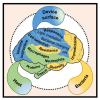Antibacterial Designs for Implantable Medical Devices: Evolutions and Challenges
- PMID: 35893454
- PMCID: PMC9326756
- DOI: 10.3390/jfb13030086
Antibacterial Designs for Implantable Medical Devices: Evolutions and Challenges
Abstract
The uses of implantable medical devices are safer and more common since sterilization methods and techniques were established a century ago; however, device-associated infections (DAIs) are still frequent and becoming a leading complication as the number of medical device implantations keeps increasing. This urges the world to develop instructive prevention and treatment strategies for DAIs, boosting the studies on the design of antibacterial surfaces. Every year, studies associated with DAIs yield thousands of publications, which here are categorized into four groups, i.e., antibacterial surfaces with long-term efficacy, cell-selective capability, tailored responsiveness, and immune-instructive actions. These innovations are promising in advancing the solution to DAIs; whereas most of these are normally quite preliminary "proof of concept" studies lacking exact clinical scopes. To help identify the flaws of our current antibacterial designs, clinical features of DAIs are highlighted. These include unpredictable onset, site-specific incidence, and possibly involving multiple and resistant pathogenic strains. The key point we delivered is antibacterial designs should meet the specific requirements of the primary functions defined by the "intended use" of an implantable medical device. This review intends to help comprehend the complex relationship between the device, pathogens, and the host, and figure out future directions for improving the quality of antibacterial designs and promoting clinical translations.
Keywords: antibiotic resistance; antimicrobials; bacterial charging; biocompatibility; cell-selective surfaces; implantable antibacterial surfaces; polymicrobial infections; protein adsorption; surface modification; tissue integration.
Conflict of interest statement
The authors declare no conflict of interest.
Figures








Similar articles
-
Nature-inspired surface modification strategies for implantable devices.Mater Today Bio. 2025 Feb 25;31:101615. doi: 10.1016/j.mtbio.2025.101615. eCollection 2025 Apr. Mater Today Bio. 2025. PMID: 40115053 Free PMC article. Review.
-
The future of Cochrane Neonatal.Early Hum Dev. 2020 Nov;150:105191. doi: 10.1016/j.earlhumdev.2020.105191. Epub 2020 Sep 12. Early Hum Dev. 2020. PMID: 33036834
-
Cost-Effectiveness of an Antibacterial Envelope for Cardiac Implantable Electronic Device Infection Prevention in the US Healthcare System From the WRAP-IT Trial.Circ Arrhythm Electrophysiol. 2020 Oct;13(10):e008503. doi: 10.1161/CIRCEP.120.008503. Epub 2020 Sep 11. Circ Arrhythm Electrophysiol. 2020. PMID: 32915063 Free PMC article.
-
Robust Thin Film Surface with a Selective Antibacterial Property Enabled via a Cross-Linked Ionic Polymer Coating for Infection-Resistant Medical Applications.ACS Biomater Sci Eng. 2018 Jul 9;4(7):2614-2622. doi: 10.1021/acsbiomaterials.8b00241. Epub 2018 Jun 15. ACS Biomater Sci Eng. 2018. PMID: 33435124
-
The Mechanisms and the Applications of Antibacterial Polymers in Surface Modification on Medical Devices.Front Bioeng Biotechnol. 2020 Nov 11;8:910. doi: 10.3389/fbioe.2020.00910. eCollection 2020. Front Bioeng Biotechnol. 2020. PMID: 33262975 Free PMC article. Review.
Cited by
-
Pentadecanoic Acid-Releasing PDMS: Towards a New Material to Prevent S. epidermidis Biofilm Formation.Int J Mol Sci. 2024 Oct 5;25(19):10727. doi: 10.3390/ijms251910727. Int J Mol Sci. 2024. PMID: 39409056 Free PMC article.
-
Histological and Histomorphometric Evaluation of Implanted Photodynamic Active Biomaterials for Periodontal Bone Regeneration in an Animal Study.Int J Mol Sci. 2023 Mar 24;24(7):6200. doi: 10.3390/ijms24076200. Int J Mol Sci. 2023. PMID: 37047171 Free PMC article.
-
Cationized Decalcified Bone Matrix for Infected Bone Defect Treatment.BME Front. 2024 Oct 2;5:0066. doi: 10.34133/bmef.0066. eCollection 2024. BME Front. 2024. PMID: 39360181 Free PMC article.
-
Safety and Performance of Postmarketing Breast Implants: An Integrated Review with Technovigilance Data.J Clin Med. 2025 Jun 12;14(12):4164. doi: 10.3390/jcm14124164. J Clin Med. 2025. PMID: 40565910 Free PMC article.
-
Challenges and Opportunities: Interplay between Infectious Disease and Antimicrobial Resistance in Medical Device Surface Applications.ACS Omega. 2025 May 20;10(21):20968-20983. doi: 10.1021/acsomega.5c01011. eCollection 2025 Jun 3. ACS Omega. 2025. PMID: 40488087 Free PMC article. Review.
References
-
- Andersen O.Z., Offermanns V., Sillassen M., Almtoft K.P., Andersen I.H., Sørensen S., Jeppesen C.S., Kraft D.C.E., Bøttiger J., Rasse M., et al. Accelerated bone ingrowth by local delivery of strontium from surface functionalized titanium implants. Biomaterials. 2013;34:5883–5890. doi: 10.1016/j.biomaterials.2013.04.031. - DOI - PubMed
Publication types
Grants and funding
LinkOut - more resources
Full Text Sources
Molecular Biology Databases

